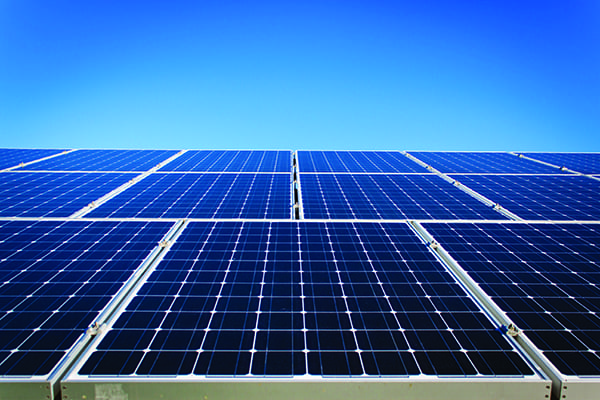Minerals Crucial to Clean Energy Transition Among Ripple Effects of War in Ukraine
Credit to Author: POWER| Date: Fri, 04 Mar 2022 17:52:09 +0000

The venerable business of commodity trading, already in the news for the supply chain impacts of COVID, has moved to center stage with the war in Ukraine. Impacts of Russia’s invasion could ripple to manufacturing of all kinds, especially the clean energy transition we need to meet climate goals.
COMMENTARY
Within the first week of fighting, we’ve seen three issues unfold in commodity markets. Energy has gotten the most attention. Most people understand the magnitude of Russia’s control of Europe’s energy supply, and Russia’s weaponization of its oil and gas is not a shock.
Agriculture is understood to be threatened, based on what happened when Russia invaded the Crimean peninsula in 2014. We are again seeing disruption in major grain shipments originating from the Black Sea region. By encircling Kyiv, Russia threatens a siege of the capital. Food shortages could add to the unfolding tragedy there and destabilize Ukraine’s trading partners as far as Northern Africa. And prices for fertilizer are headed up along with the energy used to make it.
The metals and mining complex within both Russia and Ukraine is the third leg of this stool, and tightly related to the first — since sanctions and transportation bottlenecks could block major supplies of commodities from reaching the market, and thus slow down adoption of clean energy, electric vehicles, and other forms of electrification and pollution reduction.
The International Atomic Energy Agency has said Russian forces have taken over Ukraine’s largest nuclear power plant. Find more information in this article at powermag.com.
The commodities impacted range from major Russian exports such as aluminum, steel, and nickel to less-noticed but still crucial components of electric vehicle manufacturing and other forms of electrification: neon (a byproduct of steel manufacturing used to make computer chips), palladium, and platinum among them. An electric vehicle uses about six times more minerals to make than an internal combustion engine.

The minerals sector may prove to be an exception to sanctions because of its importance to Russia’s economy as well as everyone else’s. However prices are already skyrocketing for the raw materials used in clean energy, and some companies and countries have begun stockpiling, which very quickly exacerbates market disruptions. And it’s not just mining but processing and refining capacity at stake—areas in which China has dominance and could yet intervene during the global conflict with Russia, its ally.
In the short term, European countries may be tempted to unwind their pledges to avoid subsidizing fossil fuels. Amid one of the most severe conflicts since World War II, with a transition to clean energy that is still gathering speed, they could argue that security takes priority over decarbonization. Shale gas is surging and could win back government support.

However, the case for the transition from fossil fuels is now clearer than ever, since energy can now be made from technology instead of fuel, with its uncertain geopolitics. The U.N. just issued its most dire warning yet about the climate. Europe has already led in adoption of clean energy, and the U.S. administration just restated its commitment in President Biden’s State of the Union address. Cleantech has become a safe haven asset class for investors, and unless choked off by shortages, it appears that its growth will continue to accelerate.
Cleantech manufacturers have already been given strong incentives to diversify their supply chains, first by the pandemic’s disruptions to production and shipping, and more recently by human rights concerns over China’s Xinjiang province (where much of the world’s polysilicon originates). The conflict in Ukraine offers one more reason to find and secure geographically diverse sources of supply.
The process of adding capacity anywhere, much less bringing the supply chain home to the U.S., can be sorted into upstream, midstream, and downstream, each with its own time horizon: It can take eight to 15 years to develop more upstream mining capacity. Midstream processing and refining facilities, on the other hand, can take as little as six to 18 months to get up and running with off-the-shelf equipment.
At the root of many downstream manufactured products, from electric cars to energy-efficient refrigerators to solar panels, are semiconductors. The U.S. used to produce 50% of the world’s semiconductors, and still has the know-how and educational institutions. The Biden administration’s focus (and one of its arguments for a second term) is to maximize the near-term, domestic economic benefits of accelerating clean technology including by rebuilding a domestic manufacturing base so that more Americans can participate.
This adds to all the usual pressures on mid-sized companies that take on capital expenditures to scale-up facilities to a size they’re not used to, a situation common throughout the electrification supply chain. It can help to have the backing of a sophisticated counterparty to get projects financed at the highest utilization rate and lowest cost of capital.
Meanwhile in securing their sources of supply, parties to both short-term physical trades and long-term offtake agreements must price in uncertainty: the increased market volatility, heightened security issues, and geopolitical challenges such as the world hasn’t seen in a long time.
In an already fragile global economy, wise leadership will be required to keep cleantech growing and avoid a scenario in which we blow out stated climate goals. That includes a new focus on an old way of doing business: the commodity markets.
—Nicholaus Rohleder and Benjamin Banwart are co-founders of Climate Commodities of Dallas, which offers physical trading, logistics, transportation, and commercialization services centered on raw materials needed to enable the energy transition and the climate economy. Rohleder is a former roughneck in the Oklahoma and Texas oil fields turned Wall Street climate technology analyst and Forbes 30 Under 30 honoree. Banwart has worked as a commodity portfolio manager and natural resources investor.
The post Minerals Crucial to Clean Energy Transition Among Ripple Effects of War in Ukraine appeared first on POWER Magazine.